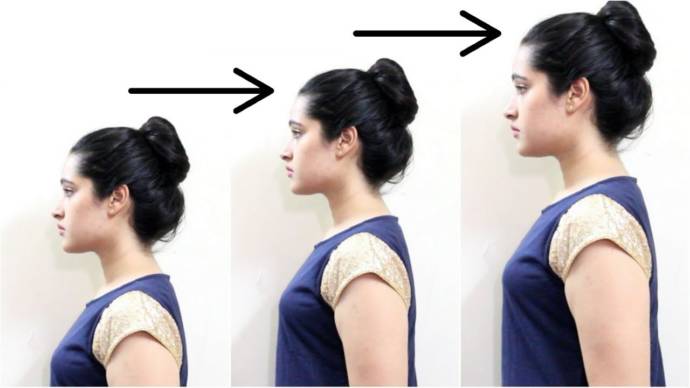How can a 13-year-old get taller? Unfortunately, many children under the age of 13 do not have the optimum height. There are various reasons for this, including genes, a lousy diet or malnutrition, the environment, excessive work, and so on.
You should be aware that about 20% of getting taller is exacerbated by how much you exercise, nap, and eat before and during your adolescent years. You can learn various strategies for becoming taller at 13 by reading his essay.
Adolescence is the term for the adolescent years. Teens will experience the most rapid growth in body size during this time. Growth spurts with puberty changes are common during adolescence.
A teenager’s growth can be quick for a few months, then stall for several months. They may then experience another growth spurt. Puberty can bring about gradual changes. Alternatively, multiple modifications could occur at the exact moment.
It’s crucial to realize that each youngster will experience these changes in a unique way. These symptoms of maturity may appear sooner or later in particular teens than in others. It’s also common to be smaller or larger than other girls. Each youngster develops at their unique rate during puberty.
When it comes to establishing secondary sex characteristics, girls go through a series of stages. Here’s a quick rundown of the variations:
- The formation of breast buds is the earliest puberty alteration in girls. As the chest and nipple become somewhat elevated, tiny mounds emerge under the nipple. The areola (the circle of different colored skin around the nipple) grows larger at this period.
- After that, the breasts continue to expand.
- The nipple and areola will grow elevated again over time. On the breast, they’ll form a new mound. The breasts would be rounded after puberty, with just the nipples elevated.
- Pubic hair grows in a limited area surrounding the genitals, and the first growth is long, soft hair. As the hair grows longer and thicker, it becomes darker and coarser.
At the stage of puberty, the height of the girl also changes. But, some girls face difficulty in increasing their height. Let us find out some ways to make a 13 years old girl grow taller.
How to increase the height of a 13 years old girl?
Methods for Growing Taller at the Age of 13:
Now, we’ve compiled a list of the top strategies that, when combined, produce the best results. They include the following:
- Eat Properly:
If you want to develop quickly, a balanced diet rich in healthy nutrients may affect how often you grow.
Include calcium in your diet since calcium is critical for growing muscular and taller bones.
Lean protein sources such as white chicken, soy products, cheese, and fish are also beneficial for muscle gain.
Additionally, drink enough Vitamin D since it assists you by strengthening your bones and promoting muscular growth in children.
Consume zinc-rich meals to help minimize your risk of stunted growth.
- Proper Posture:
Proper posture is critical for tallness. Correct posture increases height quickly and also protects your backbone from injury caused by poor or unsafe posture. Thus, by repositioning your shoulders in a straight line with your neck connected to your backbone, you can immediately gain a few millimeters.
- Rope Jumping:
This is a hard leg workout. Carry out this task for 5 minutes each time in numerous little segments, with an adequate break in between each assembly.
- Increase your water intake:
Constant water consumption is necessary for optimal growth. It is advisable to consume approximately eight glasses of water every day.
- Exercise Caution with Supplements:

You must exercise with caution when it comes to overpowering pills that promise to increase your height most simply and effectively possible. Many of are not been clinically evaluated or confirmed and may interfere with natural human growth.
- Cyclists:
While cycling, make an effort to keep your seat elevated since this will cause your legs to extend more for pedaling. Additionally, the stationary cycle enables you to cycle in your home.
Continue reading: How To Naturally Increase Your Height After 30
- Restful Sleep:
A good night’s sleep is another way to increase your height. Each individual is strongly urged to get at least six to eight hours of sleep. This is because your body creates and increases HGH, or human growth hormone, while you sleep. HGH is useful for muscular growth and strengthening.
- Avoid Growth-Stapping Factors:
Numerous variables such as consuming alcohol; smoking, secondhand smoke, taking steroids, and weightlifting at an early age can all have a detrimental effect on your height. Avoid consuming more caffeine-containing beverages.
- Swimming:

Swimming is the ideal activity since it helps you grow taller and also keeps you in incredible form. While swimming, the entire body is active, which promotes maximum mobility in all of the body’s components. Stretching occurs naturally in your body while swimming forward or backward.
Role of hormones in growth of 13 years old girl
The body creates hormones that signal bone growth to initiate the formation of new bone. These hormones include the following:
Human growth hormones get produced by the pituitary and it is the primary growth hormone. Certain health disorders can limit the number of growth hormones produced by the body, which can affect height. For example, children who suffer from a rare genetic disorder called prenatal growth hormone deficit would grow slower than typical children.
- Thyroid hormone produces growth hormones.
- Sex releasing hormone: Testosterone and estrogen are critical for puberty growth.
As children grow older, adequate nourishment is required and activity to assist their bodies in producing the hormones necessary for growth.
During puberty, teenagers have a growth spurt. Following that, their joints will stop growing and they will cease to grow in height. A girl of 13 years of age can take growth hormones to improve their height. The FDA, however, has allowed this only for those with certain medical issues.If you are concerned that their stature is excessively short, consult the physician for a patient management recommendation.





